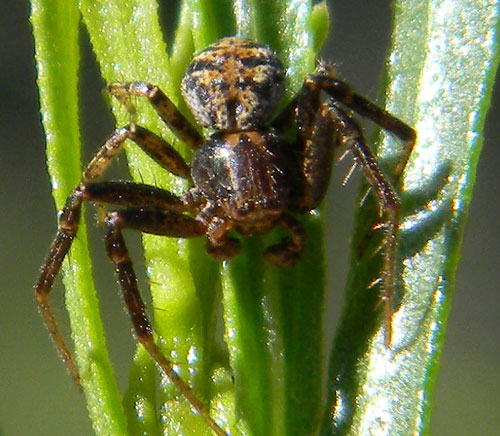Ground Crab Spider
Xysticus sp.

This male crab spider was observed upon a shrub of Desert Broom (Baccharis sarathroides) along Devil's Canyon, Gila Co., Arizona, USA. 24 April 2010. The head and eyes are facing down in this photo and the specimen is a male as evidensed by the enlarged 'boxing glove' pedipalps held in front of the face.
Sponsored Links:
The most common or conspicuous crab spiders in Arizona and much of North America are those that hunt on flowers as sit and wait predators. These tera-colored relatives also hunt mostly by sitting and waiting at strategic points on the soil or dark branches of shrubs or trees. They capture prey without benefit of a web. The first two pairs of legs are adapted for grabbing (raptorial) and also have stiff, outward pointed spines. When a prey insect comes within reach the spider lunges for the capture, quickly injects toxic venom with its fangs and then holds the dying prey at bay until the struggles cease. The very long first legs make forward movement cumbersome and so when moving about these spiders walk sideways - like a crab.
There are over 50 species of Xysticus known from North America; identification to species often requires close microscopic examination of the pedipalps - the boxing glovelike reproductive organs of the male.